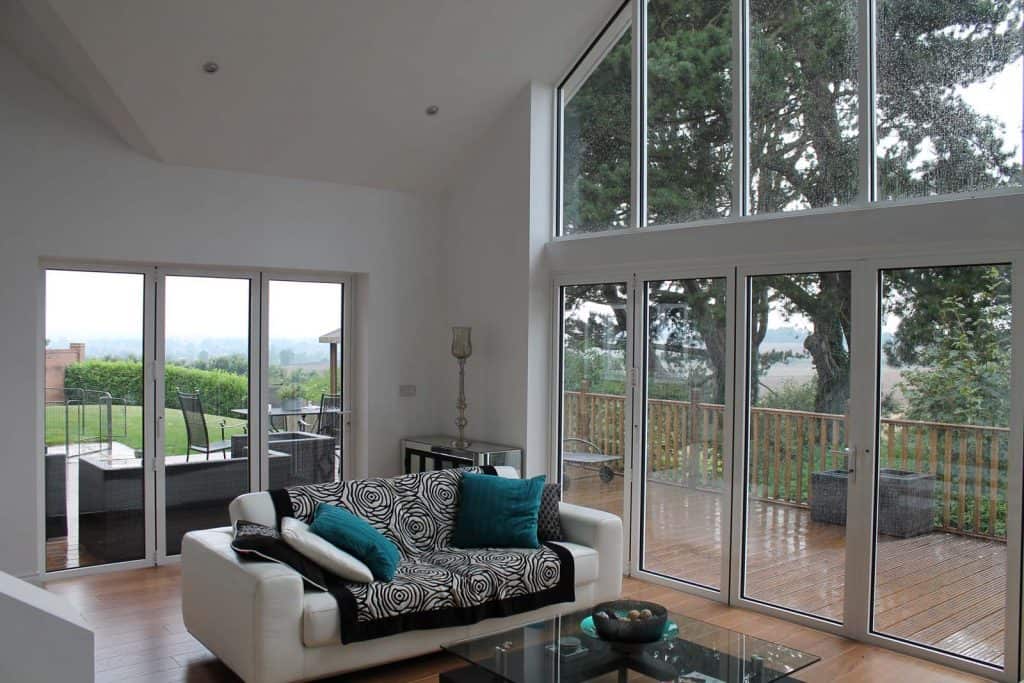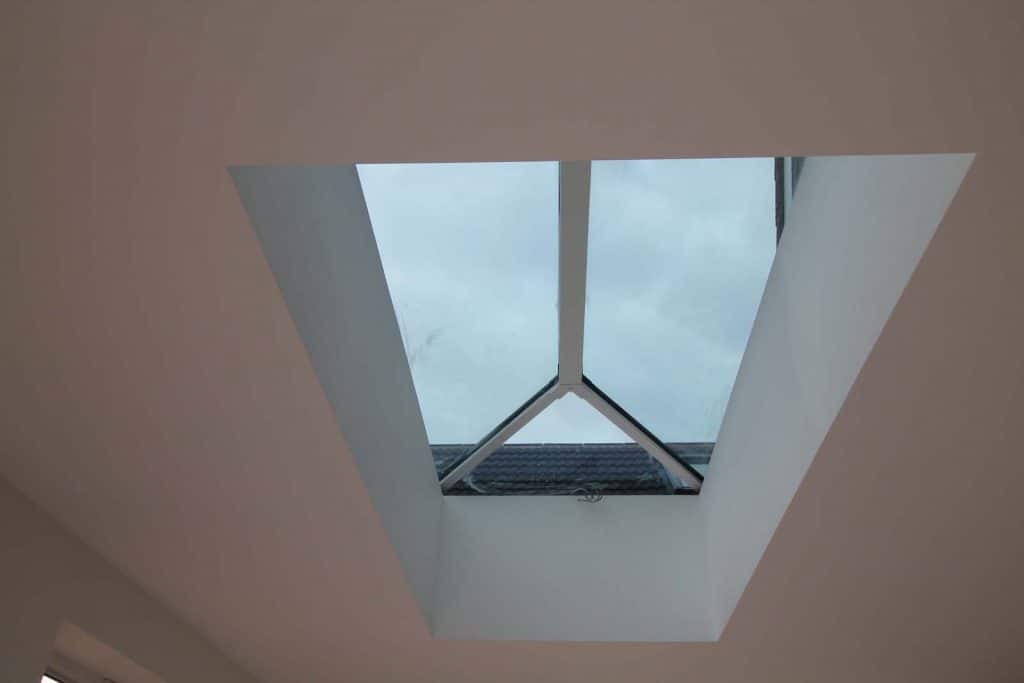An abundance of natural light can transform an ordinary home into something quite spectacular, both internally and externally. With this in mind, when planning improvements to your home or designing a new build, we carefully consider the design and materials for windows and doors.
In this article, we’re going to look at a few creative and practical applications of glazed structures, including bi-fold doors, glazed gable frames, roof lanterns and Velux windows.
Filling your home with natural light has many positive effects. It is an aspect of your design which shouldn’t be overlooked. The benefits range from improving overall well-being to environmental advantages and energy savings.
Roof lanterns
Roof lanterns are a fantastic way to maximise light while enhancing the room with a design feature. Aluminium is the preferred material as the frames are slimmer and therefore maximise the surface area of the glass. They come in numerous colour options, which allows them to harmonise with the room’s decor. Because lanterns are usually under direct sunlight, we tend to fit tinted glass to reduce the glare.
Velux windows
The installation of Velux windows is a perfect solution to allowing light into your home to areas that would otherwise be starved of natural light. The use of solar-powered windows in these areas can have an added appeal, as the windows can be opened and closed via a remote control. No wiring is needed, and there are no running costs. They only require the sun’s renewable energy. There is no need to worry about the rain either as these windows will close as soon as a raindrop is detected.
Choosing the right glazing
Reduction of heat loss and maximising natural light are also energy saving factors, so choosing the right glazing for your home is a key decision. The energy performance of windows and glazed doors is measured by their U value. The lower the value, the more energy-efficient the glass. Triple glazing has a U value of no more than 0.8. The typical U value of double glazing is 1.4, and single glazing is around 5. Other variables such as coatings applied to the glass to reduce heat loss (called low emissivity coatings) and the type of gas used to fill the cavities between the panes can all improve efficiency. In areas of the home that are susceptible to overheating, solar control glass can be specified to reduce excessive ‘solar gain’ (a technical term for the glass heating up) in the summer.
Bi-folds and glazed gable frames
As part of the construction of this extension we fitted bi-fold doors and glazed gable frames creating a complete glass wall to the rear of the property, thus bringing the outdoor space into the home. The glazed gable is an excellent means of introducing light from above and captures views on both floors. The bi-fold doors on two walls flooded the room with light to create this stunning effect, making the room feel and look larger. This feeling of space, coupled with a need for only a small amount of space for the stacked bi-fold doors when opened, allows the maximum area for your internal design. Thermal energy-efficient windows and doors not only allow the light in but also help to retain heat, naturally reducing the consumption of gas and electricity. They reduce energy bills and benefit the environment by creating a more sustainable home.
Bi-folds and roof lantern
Bi-folds and laminated glass

This particular aluminium bi-fold was fitted with laminated glass. The doors were situated near a road. To counteract the potential noise, laminated glass was fitted within the doors, which is a great option for reducing the transfer of noise into the property. See more of this project.
Choosing the right materials for window and door frames
Having looked at the various types of glazing, the selection of the right material for your window frames and doors is another consideration. Plastic (UPVC) is the most common, being the cheapest option and requiring little maintenance. Timber is the most versatile, suiting both contemporary and traditional style homes. But it does vary in price considerably depending on whether hard or soft wood is used. Aluminium is the most popular choice for more contemporary homes. Like UPVC it requires little maintenance but has the added benefit of finer frames and many colour choices. Aluminium frames also don’t expand and contract as much as UPVC or timber under cold and hot conditions, making them the better choice for bi-folding and sliding doors.
All of the elements above are a very important factor when planning your project. Design, colour, material, U-values and cost are the essence of any project. We are happy to advise and help to ensure that you choose the best product for your home.




